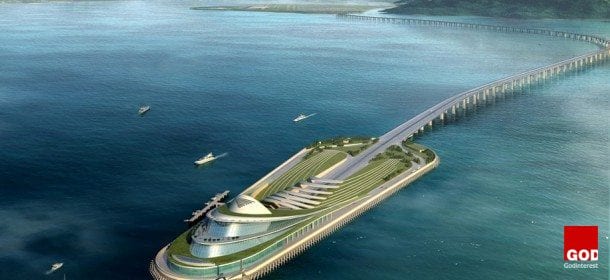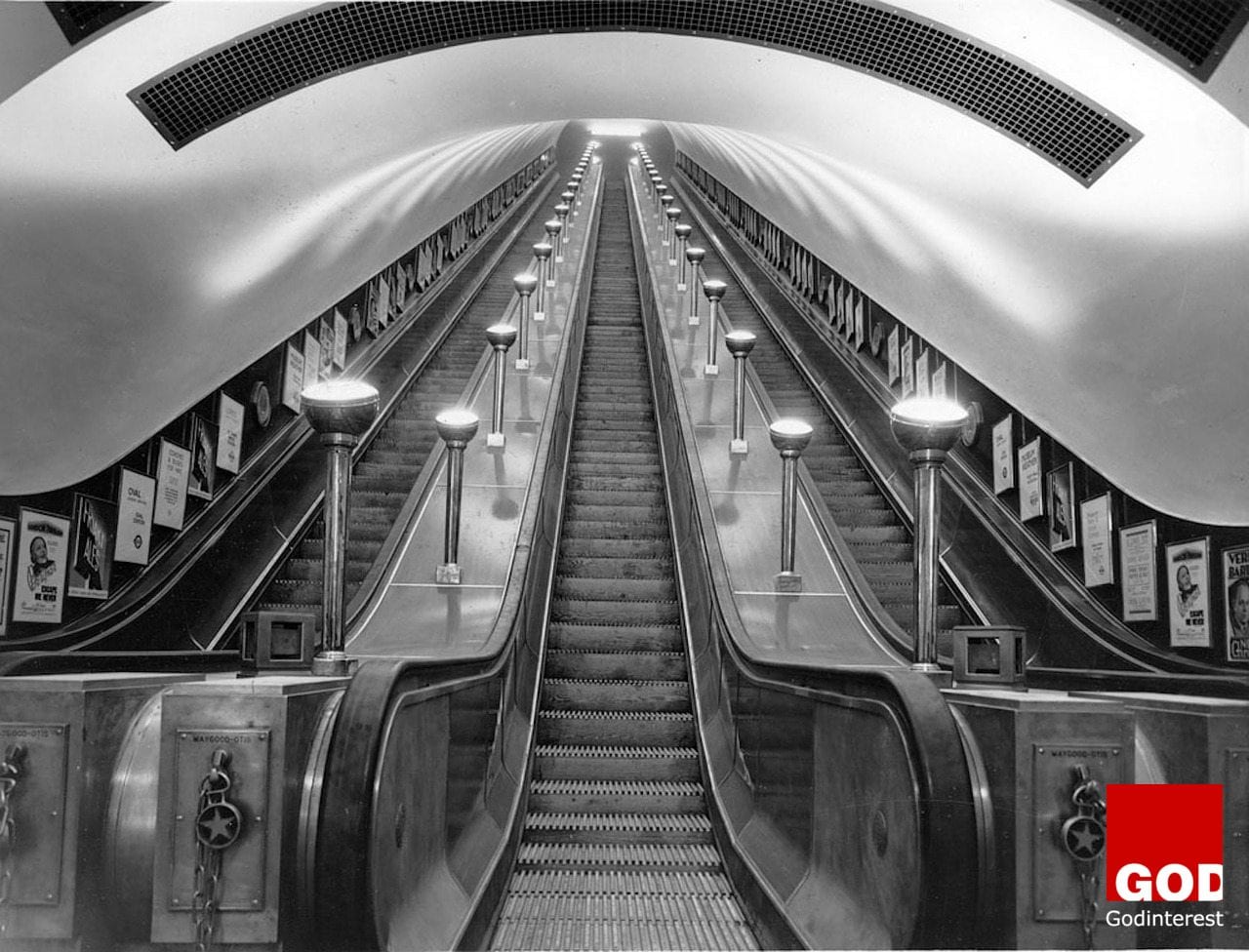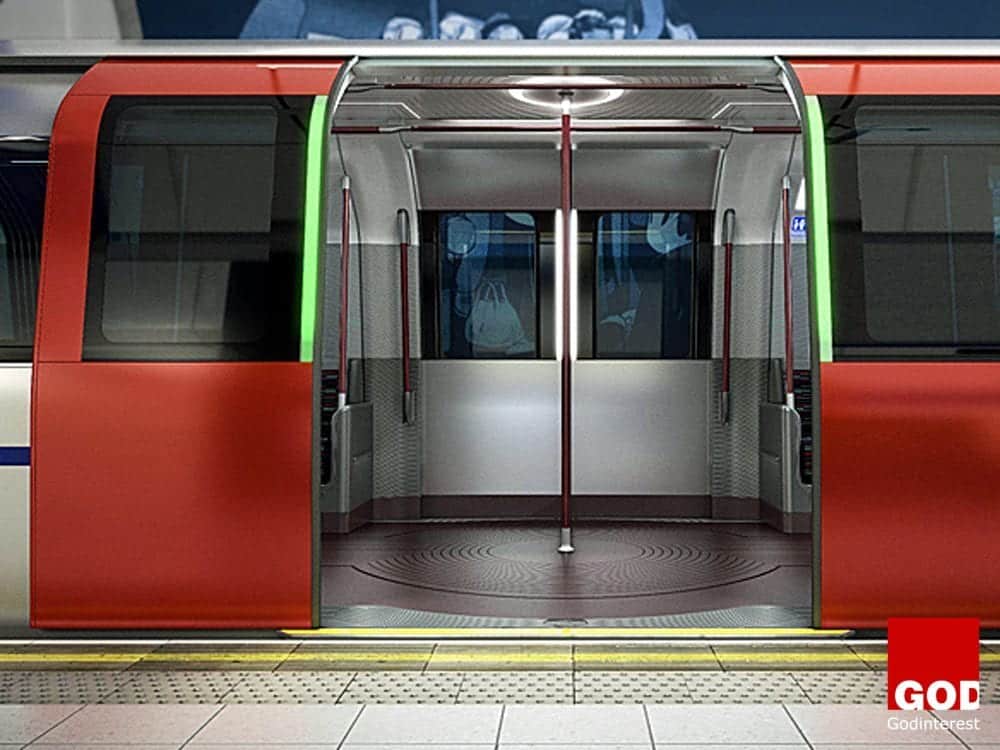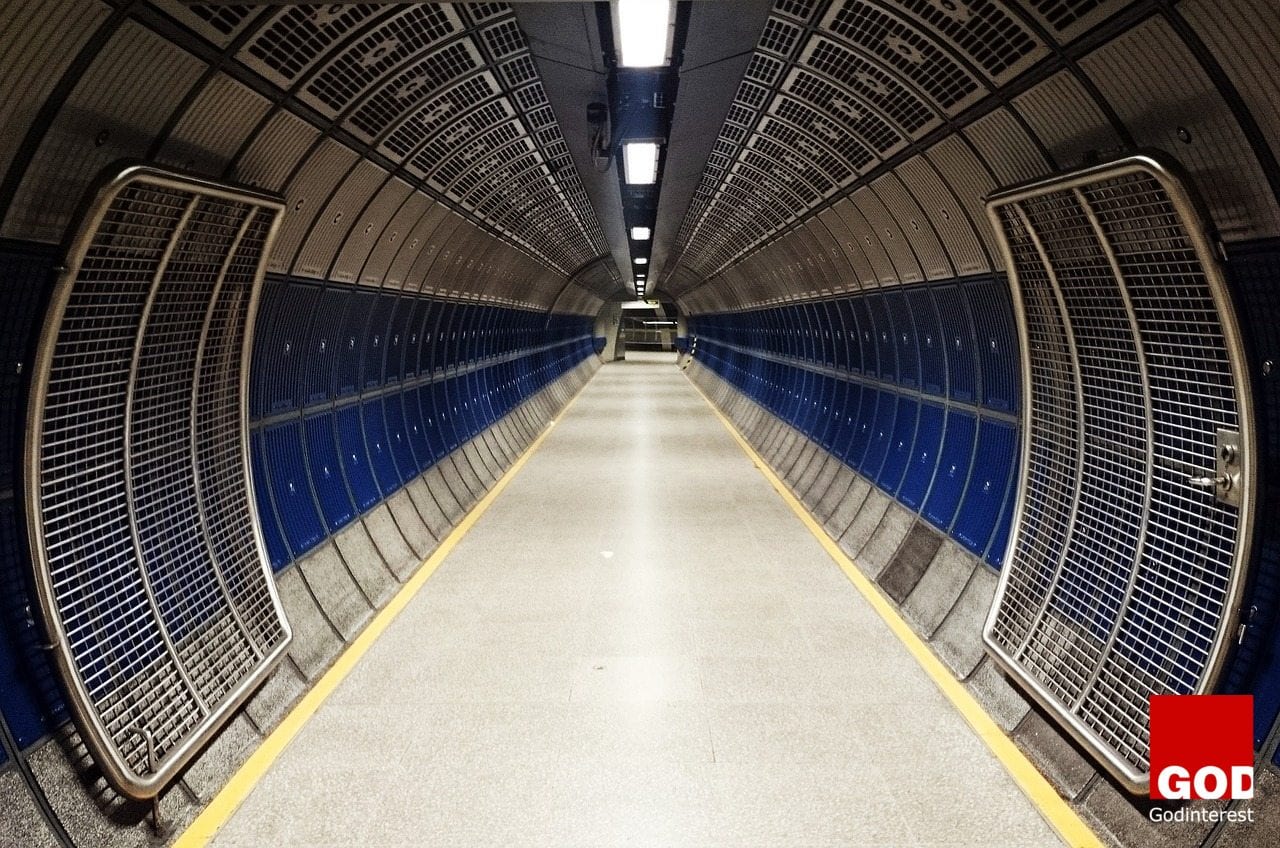Has Nigeria Become the World’s Junk Yard of Abandoned and Failed Mega Projects worth Billions?
Dim1, N. U., Okorocha2, K. A., & Okoduwa3 V. O.
The Nigerian construction industry is mostly concerned with the development and provision of projects such as roads, bridges, railways, residential and commercial real estates, and the maintenance necessary for the socio-economic developments contributes immensely to the Nigerian economic growth (Bureau of Statistics, 2015). Butcher and demmers (2003) described projects as an idea which begins and ends by filling a need. However, a project fails when its idea ends without meeting the needs and expectations of its stakeholders.
Nigeria Has Become the World’s Junk – Yard of Abandoned and Failed Projects worth Billions of Naira!
Hanachor (2013), revealed that projects form part of the basis for assessing a country’s development. However, a damming report from the Abandoned Projects Audit Commission which was set up by the Ex-President Goodluck Jonathan in 2011 revealed that 11,886 federal government projects were abandoned in the past 40 years across Nigerian (Abimbola, 2012). This confirmed the assertion by Osemenan (1987) “that Nigeria has become the world’s junk –yard of abandoned and failed projects worth billions of naira”.
Abandoned projects including building and other civil engineering infrastructure development projects now litter the whole of Nigeria.
Physical projects do not only provide the means of making life more meaningful for members of the community where the projects are located, successful projects also result in empowerment and collective action towards self improvement (Hanachor, 2013).
This Issue of Abandonment Has Been Left Without Adequate Attention for Too Long, and Is Now Having a Multiplier Effect on the Construction Industry in Particular and the Nigeria’s National Economy as a Whole. (Kotngora, 1993)
PROJECT FAILURE
Project Failure might mean a different thing to different stakeholders. A project that seemed successful to one stakeholder may be a total failure to another (Toor and Ogunlana, 2008). Some stakeholders, more especially the project users and some private owners, think of failed projects as a situation where a completed building project collapsed, a situation where by a completed dam project stopped working after few days of completion, or a completed road project that broke down after few months of completion. Other experienced stakeholders, such as engineers and architects conform to the iron triangle by Atkinson (1999) which states that the most strategically important measures of project failure are “time overrun”, “cost overrun”, and “poor quality”.
Turner (1993) noted that a project fails when the project specifications are not delivered within budget and on time; the project fails to achieve its stated business purpose; the project did not meet the pre-stated objectives; the project fails to satisfy the needs of the project team and supporters; and the project fails to satisfy the need of the users and other stakeholders. Lim and Mohamed (1999) cited in Toor and Ogunlana (2009) clarified that there are two possible view points to project failure namely; the macro-level and the micro-level. They further explained that the macro view point reviews if the original objectives and concepts of the project was met. Usually the end users and the project beneficiaries are the ones looking at the project failure from the macro view point, where as the project design team, the consultants, contractors, and suppliers review projects from a micro view point focusing on time of delivery, budget, and poor quality.
In the early 1990s, the failure as well as the success of any project was determined by the project duration, monetary cost, and the performance of the project (Idrus, Sodangi, and Husin, 2011). Belout and Gauvrean (2004), also confirmed that the project management triangle based on schedule, cost, and technical performance is the most useful in determining the failure of a project. Moreover, a project is considered as an achievement of specific objectives, which involves series of activities and tasks which consume resources, are completed within specifications, and have a definite start and end time (Muns and Bjeirmi 1996, cited in Toor and Ogunlana, 2009). Reiss (1993) in his suggestion stated that a project is a human activity that achieves a clear objective against a time scale. Wright (1997) taking the view of clients, suggested that time and budget are the only two important parameters of a project which determines if a project is successful or failed. Nevertheless, many other writers such as Turner, Morris and Hough, wateridge, dewit, McCoy, Pinto and Slevin, saarinen and Ballantine all cited in Atkinson (1999), agreed that cost, time, and quality are all success as well as failure criteria of a project, and are not to be used exclusively.
FACTORS OF PROJECT FAILURE
Cookie-Davies (2002) stated the difference between the success criteria and the failure factors. He stated that failure factors are those which contributed towards the failure of a project while success criteria are the measures by which the failure of a project will be judged. The factors constituting the failure criteria are commonly referred to as the key performance indicators (KPIs).
Time and Cost Overrun
The time factor of project failure cannot be discussed without mentioning cost. This is because the time spent on construction projects has a cost attached to it. Al-Khali and Al-Ghafly, (1999); Aibinu and Jagboro, (2002) confirmed that time overrun in construction projects do not only result in cost overrun and poor quality but also result in greater disputes, abandonment and protracted litigation by the project parties. Therefore, focus on reducing the Time overrun helps to reduce resource spent on heavy litigation processes in the construction industry (Phua and Rowlinson, 2003). Most times, the time overrun of a project does not allow resultant system and benefits of the project to be taking into consideration (Atkinson, 1999). Once a project exceeds the contract time, it does not matter anymore if the project was finally abandoned or completed at the same cost and quality specified on the original contract document, the project has failed. Furthermore, Assaf and Al-Hejji, (2006) noted that time overrun means loss of owner’s revenue due to unavailability of the commercial facilities on time, and contractors may also suffers from higher over heads, material and labour costs.
Poor quality/Technical Performance
The word “Performance” has a different meaning which depends on the context it is being used and it can also be referred to as quality. Performance can be generally defined as effectiveness (doing the right thing), and efficiency (doing it right) (Idrus and Sodangi, 2010). Based on this definition of performance, at the project level, it simply means that a completed project meets fulfilled the stakeholder requirements in the business case.
CAUSES OF PROJECT FAILURE
A lot of research studies have investigated the reasons for project failures, and why projects continue to be described as failing despite improved management. Odeh and Baltaineh, 2002; Arain and Law, 2003; Abdul-Rahman et al., 2006; Sambasivan and Soon, 2007; all cited in Toor and Ogunlana, 2008, pointed out the major causes of project failures as Inadequate procurement method; poor funding and availability of resources; descripancies between design and construction; lack of project management practices; and communication lapses
The contract/procurement method
A result obtained from two construction projects which were done by the same contractor but using different procurement methods showed that rework, on the design part which occurs when the activities and materials order are different from those specified on the original contract document, makes it difficult for the project to finish on the expected time (Idrus, Sodangi, and Husin, 2011). This is as a result of non-collaboration and integration between the design team, contractor, and tier suppliers. The rework on the design portion has a huge impact on project failure leading to the time overrun. The traditional method of procurement has inadequate flexibility required to facilitate late changes to the project design once the design phase of the construction project has been concluded.
Nigerian most widely used procurement method is the traditional method of procurement (design-bid-construct) which has been confirmed to be less effective to successfully delivery of a construction project (Dim and Ezeabasili, 2015). And, the world bank country procurement assessment report (2000) cited in Anigbogu and Shwarka, (2011) reported that about 50% of projects in Nigeria are dead even before they commence because they were designed to fail.
The way the construction projects are contracted, in addition to the way the contracts are delivered, contributes to the causes of projects failure. Particularly, among the methods of project contracting is lump-sum or a fixed-price contracting method, in which the contractor agrees to deliver a construction project at a fixed price. The fixed-price contract can be low-bid or not however, once the contract cost has been agreed upon the contract award, it cannot be changed. And, contractors are expected to honor and deliver the contract agreement, failure to do so can result in a breach of contract which can result in the contractor being prosecuted.
Awarding a contract to an unqualified personnel also contributes to project failures. When a contractor places more emphasis on money and the mobilization fee after a construction project has been initiated instead of getting the right workforce and skilled professionals that will execute the project. Instead the workforce chosen will often not be base on competence and required skills rather it will be based on availability. Moreover, poor strategy and planning by contractors who have overloaded with work also contributed to one of the causes of project failure.
Poor funding/Budget Planning
A lot of public projects in the Nigerian construction industry failed as a result inadequate funding, and the difference between the national annual budget and the budget actual released. Most of the Nigerian public projects are signed even before the actual release of the national budget. The difference in budget of the contracted project and the actual budget release can get the contracted company stuck as a result of inflation of prices, scarcity of construction material at the time of the budget release and mobilization to site. Also un-planned scope of work which can be as a result of the contractor working on another contract when he is called back to mobilization to start work. Moreover, poor budget planning is a regular mistake made by some contractors by not undertaking feasibility assessments before starting the design. The construction project should be planned according to the available resources and not according to the unrealistic expectations a client has in mind.
Discrepancies Between the Design and Construction
Limited collaboration between the contractors, engineers, and the architect results in discrepancies between the project designs and construction on site, and further leads to rework. Changes on a project designs, and changing to the scope of work in the middle of construction processes on site can be dangerous, and can lead to time overrun, increase in cost, and most of all can lead to abandonment. Moreover, many cases have been seen where the designs from the architects are not buildable on site, while In some cases, most contractors are unable to adequately specify the scope of work for the construction processes on site. Therefore any default on the design by the architect can be an opportunity for the contractor to make more money which might cause the project duration to exceed the time specified on the contract document.
RESEARCH METHODOLOGY
This research starts with a general reasoning or theory which says that the major cases of project failure in the Nigerian construction industry are defined based on time overrun and cost overrun. The findings from the data analysis will help on the decision to accept the theory or not. The research data was collected from the progress report for the month ending of October, 2015 published by the Nigeria of Federal Ministry of works on thirty-nine on-going highway construction projects at the South-South geopolitical zone. The table 1 below shows the information on the data collected which comprises of the project title, contract Number, project description, the contractor that was awarded the projects, the date of project commencement, date of completion and the extended date if any. The scheduled time for each project was specified as follows: project commencement date labeled as “a”, project completion date labeled as “b”, and the extended date labeled as “c”.


DATA ANALYSIS
The data analysis was done with the use of Microsoft excel. The analysis started by obtaining the number of days between the date of commencement of each project and the date of completion to show the duration of each highway project. And, the number of days between the project completion date and the extension date showed the time-overrun. The project duration and the extended days were obtained with the use of NETWORKDAYS function in Microsoft Excel which calculates the number of working days between two dates excluding weekends and any dates identified as holidays.
The standard deviation between the specified project duration for each highway projects and the extended days was calculated to obtain the extent to which each highway project contract failed on its time of delivery. This was denoted as the degree of failure. The table 1 above showed the projects ranking which was done based on the degree of failure of all the highway projects. The highway projects that were ranked from one to sixteen have low degree of failure and are represented with green color, while the rest are those with high degree of failure and are represented with red color.
FINDINGS
The findings made showed that the successfully completed highway projects have no extended days or time overrun, and the successful on-going highway projects are still on schedule and have no extended days unlike the on-going highway projects that have already failed as a result of the extended dates. Other projects have been abandoned because they have exceeded the delivery date as specified on the contract document, and have no extended date of completion. Thus, no work is going on.


Figure 2 above showed that 14% of highway projects are still on-going projects because they have not exceeded the original date of completion as specified on the contract document. However, they are heading towards failure because they have been given an extended date of completion which can be as a result of some critical activities running behind schedule, causing delay on the critical path network of the projects. Moreover, the other 86% completely failed because they have exceeded their completion date specified on the contract document.

The figure 3 above showed that 63% of the successful highway projects are still on-going because they have not exceed their completion dates, and they are not yet completed. However, those on-going highway projects might end up as failed projects as a result of poor funding, discrepancy between the design and the construction on site, and conflict between the construction parties or stakeholders.
“Say what you will do, and do what you said” or “Say as you will do it, and do it as you said”
CONCLUSION AND RECOMMENDATION
The idea of knowing what a failed project is, the factors and the causes is very important in project management. Success in project management can neither be achieved nor measured without the knowledge of project failure, its factors, and causes in the Nigerian construction industries. This work has shown that project failure is as a result of exceeded time of delivery, cost overrun, and poor quality. However, the analysis was only done based on exceeded time of project delivery because of the nature of the data collected.
This work suggested a few approaches to help reduce the number of failed projects in the Nigerian construction industry if properly implemented. Firstly, Having good collaboration between the project stakeholders involved in a construction project at the early stage of project conception is most important in order to accomplish the project objectives, and deliver the project on time, within budget, and quality specified on the original contract document (Othman, 2006).
Secondly, Adopting the ISO 9000 technique which is used for quality management will also help in achieving a successful project delivery. This technique states “ say what you will do, and do what you said” or “say as you will do it, and do it as you said”. This technique is not an indication of high quality but it promotes control and consistency which leads to specialization, and improved productivity and quality. Also, adopting the principles of lean construction will help to reduce waste within the construction and stream-line activities in order to improve the on-time delivery of projects.
Thirdly, Learning from the precedent failed projects, how those projects failed, and the reason for their failures. This will help the project manager to plan and mitigate the risks of project failures in the future. And, finally, more seminars and workshops will help to educate and enlighten clients (the federal government representatives), users, contractors, engineers, and architects on what is project failure, the factors that contributes to abundant failed projects, and their causes.
REFERENCE
Abimbola, A. (Novermber 24, 2012). About 12,000 Federal Projects Abandoned across Nigeria. Premium times (November 16, 2015). Retrieved from www. Premium timesng.com/news/108450-about-12000-federal-projects-abandoned-across-nigeria.html.
Al-Khali, M.I and Al-Ghafly, M.A. (1999). Important Causes of Delays in Public Utility Projects in Saudi Arabia. Construction management and Economics, 17, 647-655
Aibinu, A.A and Jagboro, G.O. (2002). The Effects of Construction Delays on Project Delivery in Nigeria Construction Industry. International journal of Project management, 20(8), 593- 599.
Anigbogu, N. and Shwarka, M. (2011). Evaluation of Impact of the Public Procurement Reform Program on Combating Corruption Practices in Public Building Project Delivery in Nigeria. Environtech Journal, 1(2). 43-51.
Assaf, S. and Al-Hajji, S. (2006). Causes of Delays in large Construction Projects. International Journal of Project Management, 24, 349-357.
Atkinson , R. (1999). Project management: Cost, time, and quality, two best guesses and a Phenomenon, it’s time to accept other success criteria. International Journal of project Management, 17(6), 337-342.
Belout, A and Gauvrean, C. (2004). Factors Influencing the Project Success: The impact of human resource management. International Journal of project Management, 22, Pp. 1-11.
Butcher, N. and Demmers, L. (2003). Cost Estiumating Simplified. Retrieved from www.librisdesign.org.
Cookie-Davies, T. (2002). The Real Success Factors on Projects. International Journal of Project management, 20(3), 185-190.
Dim, N.U. and Ezeabasili, A.C.C (2015). Strategic Supply Chain Framework as an Effective Approach to Procurement of Public Construction Projects in Nigeria. International Journal of Management and Susutainability, 4(7), 163-172.
Hanachor, M. E. (2012). Community Development Projects Abandonment in Nigeria: Causes and Effects. Journal of Education and Practice, 3(6), 33-36.
Idrus, A., Sodangi, M., and Husin, M., H. (2011). Prioritizing project performance criteria within client perspective. Research Journal of Applied Science, Engineering and Technology, 3(10), 1142-1151.
Idrus, A. and Sodangi, M. (2010). Framework for evaluating quality performance of contractors in Nigeria. International Journal of Civil Environment and Engineering. 10(1), 34-39.
National Bureau of Statistics (January, 2015). Nigerian Construction Sector Summary Report: 2010-2012.
Kotangora, O. O. (1993). Project abandonment, Nigerian Tribune.
Osemenan, I. (1987). Project Abandonment. New Watch Magazine, Vol. 1, pp. 15.
Othman, M.,R. (2006). Forging main and sub-contractor relationship for successful projects. Retrieved from http://rakanl.jkr.gov.my/csfj/editor/files/file/projek/lessonslearned/MAIN&SUB_2.pdf
Phua, F.T.T and Rowlinson, S. (2003). Cultural Differences as an Explanatory Variable for Adversarial Attitude in the Construction Industry: The case of HongKong. Construction Management and Economics, 21, 777-785.
Reiss, B. (1993). Project Management Demystified. London: E and FN Spon Publishers.
Toor, S. R. and Ogunlana, S. O. (2008).Problems causing Delay in Major Construction Projects in Thailand. Construction management and Economics, 26, 395-408.
Toor, S. R. and Ogunlana, S. O. (2008). Critical COMs of Success in Large-Scale Construction Projects: Evidence from Thailand constructuction industry. International Journal of Project management, 26(4), 420-430.
Toor, S. R. and Ogunlana, S. O. (2009).Beyound the “Iron Triangle”: Stakeholder perception of key performance indicators (KPIs) for large-scale public sector development projects. International Journal of Project management, doi: 10.1016/j.ijproman.2009.05.005.
Toor, R. and Ogunlana, S. (2009). Construction Innovation: Information, process, management. 9(2), PP. 149-167.
Turner, J. R. (1993). The Handbook of project-Based Management: Improving the process for achieving strategic objective. London, McGraw-Hill.
Wright, J., N. (1997). Time and Budget: The twin imperatives of a project Sponsor. International Journal of Project Management, 15(3), 181-186.
10 Proposed Infrastructure Projects for London to Retain Its World Class Status
London hasen’t reached the density of Hong Kong, but it’s certainly heading that way as the cities population continues to expand. The “London Infrastructure Plan 2050″ aims to tackle the problem and outlines the spending needed for the capital to remain one of the world’s leading cities.
London Mayor Boris Johnson Has Said £1.3tn of Investment Is Needed over the next 35 Years in Order for London to Retain Its World Class Status
“This plan is a real wake up call to the stark needs that face London over the next half century. Infrastructure underpins everything we do and we all use it every day. Without a long-term plan for investment and the political will to implement it this city will falter.”
London School of Economics Professor Tony Travers Said: “the London Infrastructure Plan Is a Necessary Step Towards Understanding the Needs of the ‘10 Million City’ Which London Will Soon Become.
Transport is the biggest focus of the “London Infrastructure Plan 2050” as the population hit 8.5 million in 2014 the largest it has been since 1939. By 2050 it is predicted to exceed 11 million, growing at a rate of 41,000 a year.
Some infrastructure project proposals are already in development, others may not be approved at all, however, these are some transport developments suggested for London by 2050.
1. Air con on the Tube, £900m
It was find in the beginning, in fact, conditions were so pleasant in 1906 that the city proclaimed the underground ‘The coolest place in hot weather’. But that was before deep lines and millions of passengers.
Better Late than Never, London’s Tube Is Getting Air-con
In summer, temperatures on parts of the London Underground can become very uncomfortable due to its deep and poorly ventilated tube tunnels: temperatures as high as 116 °F were reported in the 2006 heat wave. New Tube trains, which allow better access for customers, are being rolled out on the Circle line as part of the introduction of 53 new trains on both the Hammersmith & City and Circle lines. By the end of 2016 there will be a total of 191 walk-through, air-conditioned trains covering 40% of the Tube network running on the District,Circle, Metropolitan and Hammersmith & City lines.
2. Inner orbital tolled tunnel, £15bn-25bn
Mayor sets out plan for 22-mile ring-road tunnel under London, which is considered by many to be one of the most ambitious infrastructure scheme ever proposed in the city.
The tunnel will cost an estimated £30 billion to construct and will remove tens of thousands of cars from the crowded streets of London and avert traffic gridlock. With subterranean dual carriageways linking key routes, from the A40 Westway to the A12 in the east, and the A1 route north to the A2 running south.
London Major Boris Johnson, who commissioned work to develop the idea, believes it could dramatically improve quality of life for residents. He said: “I would love the views of Evening Standard readers on this. There are big arguments in favour. There are obviously arguments against.”
Transport for London is working on the concept.
3. Northern Line extension, £1bn
Works commenced on London Underground’s £1bn Northern Line extensionfrom Kennington to Battersea via Nine Elms in the UK in 2015.
Tunnelling work is scheduled to start in early 2017 and will take six months to complete, while the project is expected to be completed in 2020.
The project will reduce journey times to the West End and the city to less than 15min.
4. Cycle Super Highways, £2bn- £4bn
London’s New Superhighway Linking East and West London Will Open on 30 April, Says the Capital’s Mayor Boris Johnson
The route, which links Barking, Canary Wharf and Tower Hill to Westminster, will open less than a week before his term is set to end.
Chris Boardman, the former Olympic champion and policy advisor to British Cycling, said: “This YouGov poll shows us, yet again, that the vast majority of the public want to see more cycle tracks on main roads.
“If this kind of evidence isn’t enough to give politicians and transport authorities the confidence to act, I don’t know what is.”
Last month, Boris Johnson pressed ahead with plans for three cycle superhighways.
5. Bakerloo and Overground extensions, £2.5bn-3.5bn
The extension of the Bakerloo line could help regenerate South East London from Old Kent Road to Catford, improve routes into London and relieve congestion on the main rail services into London Bridge.
6. Crossrail 2 and 3, £23bn- £30bn
TRANSPORT chiefs say it is “full steam ahead” for Crossrail 2 after the Government made an £80million pledge towards the project – but it will be months before passengers find out if a station will be built at Balham or Tooting.
Construction work is due to begin on the rail link in the early 2020s, which would enable the service to be operational by 2033.
7. New Stations, £500m and 24/7 Night Tube service
New stations at Cricklewood, Beam Park in Rainham and Thames Wharf could be built to support redevelopment in these areas. It has also been claimed that night services on the Piccadilly, Central, and Northern Lines are then due to start in September, with all major lines being served by the weekend night tube by September 23.
8. Another channel tunnel, £1bn
The “London Infrastructure Plan 2050″ suggests an additional cross-channel rail tunnel would provide high speed links from the UK to the rest of Europe for passengers and freight.
9. 13 new crossings in London, £1-2bn
The vision for east London includes 13 proposed new river crossings include Gallions-Thamesmead, Belvedere-Rainham, Woolwich- Royal Docks to replace the Woolwich Ferry, as well as the Silvertown tunnel.
Boris Johnson states “By creating more links between the north and south of the river, we won’t just improve day-to-day travelling across the capital, we’ll unlock areas for development and create thousands of jobs and homes.
- Rotherhithe to Canary Wharf: Pedestrian and cycle bridge (feasibility).
- North Greenwich to the Isle of Dogs: a passenger ferry linking North Greenwich and the Isle of Dogs (Blackwall) (conceptual).
- Silvertown tunnel: Twin bore tunnel connecting Silvertown on the north side to the Blackwall Tunnel Approach on the south side (preparation).
- Charlton: a passenger ferry crossing linking the Royal Docks and Charlton Riverside (conceptual).
- Crossrail: New rail line linking Woolwich with Custom House and onward to Canary Wharf, central London and Heathrow Airport (construction).
- Gallions Reach: Multi-modal crossing linking Thamesmead with Beckton along a safeguarded alignment (consultation).
- Belvedere: Multi-modal crossing connecting Belvedere with Rainham (consultation)
- Barking Riverside to Thamesmead: London Overground tunnel extension from Barking Riverside to Thamesmead (conceptual).
- Lower Thames Crossing: New road crossing linking Essex and Kent (progressing).
- Diamond Jubilee: Pedestrian and cycle bridge linking Fulham with Battersea (planning permission granted).
- Crossrail 2: New railway line connecting Hertfordshire and Surrey via central London and providing a new cross river link between Victoria and Clapham Junction (consultation).
- Vauxhall, Nine Elms and Battersea: Pedestrian and cycle bridge (feasibility).
- Garden Bridge: New pedestrian crossing linking the South Bank to Temple station (planning permission granted).
10. Thames Estuary airport, 18bn-25bn
A new Thames Estuary Airport has been proposed at various times since the 1940s. Economic considerations have ruled out a new coastal airport, while political considerations have ruled out a new inland airport, leaving planners with an as-yet-unresolved dilemma.
‘Bizarre proposal’ states Rehman Chisthti, MP for Gillingham and Rainham “The airport in the estuary was not the right thing do so we all worked together to oppose it. It’s really good news and we’re really pleased that common sense has prevailed.”
However,Boris Johnson refloats idea of Thames Estuary airport 18 months after it was rejected by Airports Commission. Mr Johnson believes a hub in the east of the capital would offer around double the number of long haul and domestic routes served by Heathrow while exposing 95 per cent fewer people to significant aircraft noise.
‘Grain isn’t the answer’ states Rodney Chamber, Leader of Medway Council “We have said all along that it should never have even been considered as it would have resulted in the mass destruction of habitat and wildlife that could never be replaced.”
65% of Mega-projects Fail
There’s a reason why Mega-projects are simply called “Mega-projects.” Extremely large in scale with significant impacts on communities, environment and budgets, mega-projects attract a lot of public attention and often cost more than 1 billion. Because of its grandiose, a successful mega-project requires a lot of planning, responsibility and work. Likewise, the magnificence of such projects also creates a large margin for failure.
Mega-projects Come with Big Expectations. But a Project’s Success Is Often in the Eye of the Beholder
Despite their socio-economic significance mega-projects – delivering airports, railways, power plants, Olympic parks and other long-lived assets – have a reputation for failure. It is thought that over optimism, over complexity, poor execution, and weakness in organizational design and capabilities are the most common root causes of megaproject failure.
Blinded by enthusiasm for the project, individuals and organizations involved with mega-projects often miscalculate the complexity of the project. When a mega-project is pitched, its common for costs and timelines to be underestimated while the benefits of the project are overestimated. According Danish economist Bent Flyvbjerg, its not unusual for project managers who are competing for funding to massage the data until it is deemed affordable. After all, revealing the real costs up front would make a project unappealing, he said. As a result, these projects are destined for failure.
For example, building new railways spanning multiple countries could prove to be disastrous if plans are overly complex and over-optimized. Such a large-scale project involves national and local governments, various environmental and health standards, a wide range of skills and wages, private contractors, suppliers and consumers; therefore, one issue could put an end to the project. Such was the case when two countries spent nearly a decade working out diplomatic considerations while building a hydroelectric dam.
Complications and complexities of mega-projects must be considered thoroughly before launch. One way to review the ins and outs of a project is through reference-class forecasting. This process forces decision makers to look at past cases that might reflect similar outcomes to their proposed mega-project.
Poor execution is also a cause for failure in mega-projects. Due to the overoptimism and overcomplexity of a project, it’s easy for project managers and decision makers to cut corners trying to maintain cost assumptions and protect profit margins. Project execution is then overwhelmed by problems such as incomplete design, unclear scope, and mathematical errors in risk assessment and scheduling.
Researchers at McKinsey studied 48 struggling mega-projects and found that in 73 percent of the cases, poor execution was responsible for cost and time overruns. The other 27 percent ran into issues with politics such as new governments and laws.
Low productivity is another aspect of poor execution. Even though trends show that manufacturing has nearly doubled its productivity in the last 20 years, construction productivity remains flat and in some instances has even declined. However, wages continue to increase with inflation, leading to higher costs for the same results.
According to McKinsey studies, efficiency in delivering infrastructure can reduce total costs by 15 percent. Efficiency gains in areas like approval, engineering, procurement and construction can lead to as much as 25 percent of savings on new projects without compromising quality outcomes. This proves that planning before execution is worth its weight in gold.
We Tend to Exaggerate the Importance of Contracting Approach to Project Success or Failure
Finally, weaknesses in organizational design and capabilities results in failed megaprojects. For example, organizational setups can have multiple layers and in some cases the project director falls four or five levels below the top leadership. This can lead to problems as the top tier of the organizational chain (for example, subcontractors, contractors and construction managers) tend to focus on more work and more money while the lower levels of the chain (for example, owner’s representative and project sponsors) are focused on delivery schedules and budgets.
Likewise, a lack of capabilities proves to be an issue. Because of the large-scaled, complex nature of mega-projects, there is a steep learning curve involved and the skills needed are scarce. All the problems of megaprojects are compounded by the speed at which projects are started. When starting from scratch, mega-projects may create organizations of thousands of people within 12 months. This scale of work is comparable to the significant operational and managerial challenge a new start-up might face.
In the end, it seems that if organizations take the time to thoroughly prepare and plan for their mega-projects, problems like overcomplexity and overoptimism, poor execution, and weaknesses in organizational design and capabilities could be avoided. After all, mega=projects are too large and too expensive to rush into.
How To Deliver On The Promise of MegaProjects
Due to the large scale and outlook attached to them, mega-projects have a large opportunity for failure. Typically, the failure begins at the outset of the project, whether that be due to poor justification for the project, misalignment among stakeholders, insufficient planning, or inability to find and use appropriate capabilities.
Underestimated costs and overestimated benefits often offset the baseline for assessing overall project performance. This is why it is important for organizations to first establish social and economic priorities before even considering what projects will answer their needs. Once social and economic priorities are established, only then can a project be considered. Selecting projects must be fact-based and transparent in order to ensure accountability with stakeholders and the public.
Successful Megaprojects Must Have Robust Risk-analysis or Risk-management Protocols
It’s also important to maintain adequate controls. Successful megaprojects must have robust risk-analysis or risk-management protocols and provide timely reports on progress relative to budgets and deadlines. Typically, progress is measured on the basis of cash flow, which is less than ideal as data could be out of date and payments to contractors do not correlate construction progress. Instead, project managers should deliver real-time data to measure activity in the field. For example, cubic meters of concrete poured relative to work plans and budgets.
Overall, improving project performance requires better planning and preparation in three areas: doing engineering and risk analysis before construction, streamlining permitting and land acquisition, and building a project team with the appropriate mix of abilities.
Project developers and sponsors should put more focus into pre-planning such as engineering and risk analysis before the construction phase. Unfortunately, most organizations and sponsors are reluctant to spend a significant amount of money on early-stage planning because they often lack the necessary funds, they are eager to break ground and they worry the design will be modified after construction is underway, making up-front designs pointless.
However, it’s proven that if developers spend three to five percent of capital cost on early-stage engineering and design, results are far better in terms of delivering the project on-time and on-budget. This is because through the design process, challenges will be addressed and resolved before they occur during the construction phase, saving both time and money.
It’s not unusual for permits and approvals to take longer than the building of a megaproject. However, if developers look to streamline permitting and land acquisition, that would significantly improve project performance. Best practices in issuing permits involve prioritizing projects, defining clear roles and responsibilities and establishing deadlines.
In England and Wales, developers applied these approaches to cut the time needed to approve power-industry infrastructure from 12 months to only nine months. On average, timelines for approval spanned four years throughout the rest of Europe. Likewise, the state of Virginia’s plan to widen Interstate 495 in 2012 was able to cut costs and save hundreds of homes thanks to land acquisition planning by a private design company.
Investors and Owners Must Take an Active Role in Creating the Project Team
When it’s all said and done, projects cannot deliver the best possible return on investment without a well-resourced and qualified network of project managers, advisers and controllers. Investors and owners must take an active role in creating the project team.
It’s not enough to have a vague overview of what the project might look like in the end. Instead, it’s necessary to review risks and costs and draft a detailed, practical approach to tackle various issues. An experienced project manager cannot do it all alone. The project team must include individuals with the appropriate skills, such as legal and technical expertise, contract management, project reporting, stakeholder management, and government and community relations among others.
Failure to Properly Plan for These Projects Could Have a Negative Impact on Society
While mega-projects are important in filling economic and social needs, failure to properly plan for these projects could have a negative impact on society. Take Centro Financiero Confinanzas (Venezuela), the eighth tallest building in Latin America at 45 stories, located in the financial district of Venezuela’s capital, Caracas for example.
To those unaware of its history, the Centro Financiero Confinanzas is actually home to over 700 families, a “vertical slum” that is a truly fascinating example of reappropriation of space in an urban environment. An ironic symbol of financial failure that was intended to represent the unstoppable march of Venezuela’s booming economy.
It’s much more than an unbuilt building, bridge or tunnel, failed mega-projects are a blow to the economic growth and social improvements of communities around the world.
The 8 Biggest Risks of Big Data Projects
Spectacular Architecture and Infrastructure Projects That Take Your Breath Away
The advent of the ‘megaproject’ is truly upon us as such projects become a key feature of city landscapes.
The Empire State Building, the Panama Canal, the Regatta Hotel in Indonesia – these are just a few of the architectural and infrastructure wonders of the world that you probably take for granted. With the National Geographic putting images on the map and now the Internet fuelling easy access to pics, it’s easy to forget how difficult these projects are for engineers to build. Behind the scenes, much goes on to tackle the making of a magnificent bridge, building or highway and byway. Here are a few such projects that should cause you to sit up and have your breath taken away because of their grandiosity, complexity and stunning beauty.
New York Residential Building


Still in the building stages, a residential towel at 432 Park Avenue is set to be one of the most expensive addresses in the U.S. Taller than the Empire State Building by 50 meters, the 426 meter building is considerably large, but plans to host just 104 apartments. Living in the building will cost you, though. If you’ve got $17 million you can start the process of bargaining for an apartment; however, the best apartments are the penthouses that will span an entire floor and go for $82 million or more.
The Panama Canal

Now that the Panama Canal has been in place nearly 100 years, we take for granted how it revolutionised trade and travel. The recent billion dollar improvement projects increased the length and width of the canal, adding more locks at both ends of the passageway connecting the Atlantic and Pacific oceans. Now that even bigger container vessels can travail the Canal, neighboring Nicaragua is in the planning stages of building its own canal – to the tune of $40 billion. The best and brightest engineers harnessed real ingenuity to figure out how to tame Mother Nature to advance the cause of expanding travel.
Hong Kong Zhuhai Macao Bridge, China

Hong Kong’s bridge project is one of the largest most complex in the world and uses a series of tunnels and bridges to connect three major cities: Hong Kong, Zhuhai and Macau. Costing more than $10 billion to build, it will drive the freight land transport needs of the region as well as facilitate the movement of passengers between the cities. The three-lane bridge and tunnel roadway includes the construction of two artificial islands to accommodate the building of the various roads involved with the project.
These and other architectural projects that defy gravity, plunge the depths of the ground and cover the sea are a wonder to behold. They put the best of human genius to work to solve complex problems such as how to build a bridge over a considerable expanse of water and accommodate tunnels under the water. The creativity of the world’s engineers and architects are put to the test, and they come up as winners every time with projects like the Park Avenue residential building, the Panama Canal and The Hong Kong-Zhuhai-Macau Bridge. However, the human mind still can’t come close to understanding the vastness of the whole universe. But as we get better at it, we clearly see two things: how tiny and insignificant man is by himself—and just how huge and wonderful is the plan that God most have for us!



























